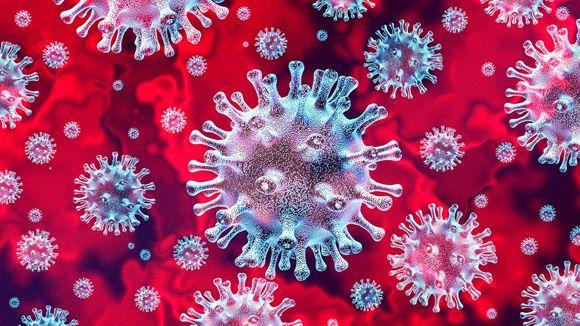
Section Branding
Header Content
Digital Content To Help Kids Understand The Coronavirus Outbreak
Primary Content

As news of the novel coronavirus pandemic continues to dominate headlines, kids (and adults alike) likely have a lot of questions about what they're reading online or hearing on the news. From proper hand-washing techniques to explaining what it means to "flatten the curve," these digital learning resources from PBS offer students, parents, and teachers high-quality content on understanding the coronavirus.
1. What This Chart Actually Means for COVID-19 | It's Okay To Be Smart
Stay informed. Stay cautious, but not scared. Listen to scientists and public health officials and follow their guidance. By protecting yourself, you’re protecting the most vulnerable among us. Together we can flatten the curve on COVID-19 and SARS-CoV-2.
2. How Do Hand Sanitizers Work? | Reactions
The labels always read, "Kills 99.99% of Germs!" but does the science of hand sanitizers back it up? Today Reactions takes a closer look at the chemistry of what this goo is made of, and just how effective it really is against viruses and bacteria. Yay chemistry!
3. Why Vaccines Work | It's Okay To Be Smart
Are vaccines safe? How do vaccines work? Why do some people claim there is a link between vaccines and autism? This video looks at why people are afraid of something that has saved so many lives, and the history and science of vaccines.
4. Could You Be Immune To Everything? | It's Okay To Be Smart
Do you remember having a cold in 5th grade? Or the flu a couple years ago? Your immune system does. Our bodies hold many levels of immune defense. Physical barriers like skin, the innate immune system, and our body’s most powerful defender, the adaptive immune system. Millions of B cells and T cells and antibodies are constantly on patrol for germs and antigen invaders. As scientists learn more about how this system works and how to engineer it, could we ever actually be immune to everything?
5. Where Do Viruses Come From? | PBS Eons
There are fossils of viruses, of sorts, preserved in the DNA of the hosts that they’ve infected. Including you. This molecular fossil trail can help us understand where viruses came from, how they evolved and it can even help us tackle the biggest question of all: Are viruses alive?
6. Why Do We Wash Our Hands After Going to the Bathroom? | Origin of Everything
We all know that washing your hands it’s one of the best ways to prevent germs from spreading. But until relatively recently hand washing was something relegated primarily to religious rituals and cultural ceremonies. And the first person to suggest that doctors wash their hands before surgery was put in a mental hospital! Why? Watch the episode to find out.
7. Can Soap REALLY "Kill" the Coronavirus? | Reactions
Constantly being told to wash your hands? Us too. So we’re diving into the chemistry behind why soap is so effective against viruses like the coronavirus that causes COVID-19.
8. Coronavirus: Why Social Distancing Saves Lives
To slow the spread of the coronavirus, or COVID-19, public health experts are telling us to stay home and practice “social distancing.” Think social distancing doesn’t matter if you’re young and healthy? Think again. It’s not about you-- it’s about protecting the community. And in this Above the Noise video, we get into why it’s so important, even if you’re not in a high risk category.
9. Why Do Bats Carry So Many Dangerous Diseases?
Bats are amazing and not just because they're the only mammal that can fly! But they also carry a lot of diseases that are dangerous to humans, and while that is definitely not their fault, there is actually a lot we can learn from their unique immune systems.
10. Why Soap Is Still Our Best Weapon Against Coronavirus
One of the most effective things you can do to protect yourself from catching a germ and becoming a statistic, whether it’s a global pandemic like COVID-19 or just every single other day of your life, is something that people have been trying to get you to do since you were like two. Wash your hands. With good ol’ soap. And do it the right way. That’s it. Here’s the science of handwashing!





